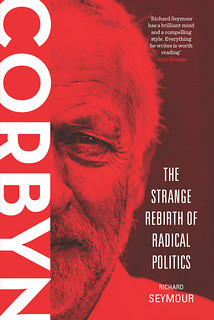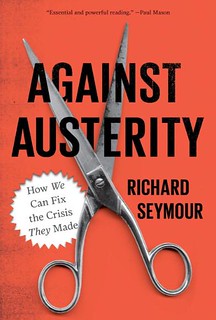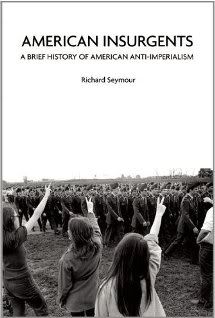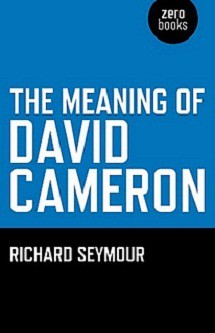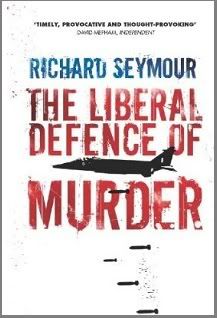Friday, August 13, 2010
Myths of class posted by Richard Seymour
 How do we come to our understandings of class? As bell hooks has argued, most of the pedagogy on such subjects is taking place at the level of culture, in the news, the films, the soaps, etc. For example, you learn from soaps like Eastenders that whatever class once meant, it is not an important structuring principle of people's lives.
How do we come to our understandings of class? As bell hooks has argued, most of the pedagogy on such subjects is taking place at the level of culture, in the news, the films, the soaps, etc. For example, you learn from soaps like Eastenders that whatever class once meant, it is not an important structuring principle of people's lives.This is simply because the characters get by without ever having to confront such issues. Even if the accents are ostentatiously proletarian, even if all the clothing, cultural and environmental markers are carefully chosen to depict a normal looking working class suburb, even if the subject is ostensibly a working class 'community', the reality of class is never allowed to pervade the lives of the often cartoonish, scheming, semi-criminal fraternity that exists around Albert Square. People are rarely shown working, and inasmuch as they do work, it is usually in small businesses, stalls, and other petty entrepreneurial outlets. There is no social space where a clash between workers and management might take place. There aren't mass redundancies, strikes, and wholesale social breakdown wrought by the closure of big local employers, which is a normal fate for urban centres in the UK.
What is true of Eastenders is not entirely true of Coronation Street, where there have in the past been regular scenes of class struggle in Mike Baldwin's sewing factory, in one instance featuring a victorious strike which ended with the women workers marching into the 'Rover's Return' pub chanting "the workers, united, will never be defeated!" Still, these are the exception. In contrast to the general suppression of class issues, there are regular homilies on race, sexuality and gender, though the soaps tend to handle these topics extremely badly. Eastenders' depiction of socially conservative "Muslim thugs" beating up a gay character named Christian (yeah) is a recent, poor example of a storyline that trades on a progressive angle for reactionary ends. This is not unrelated to the invisibility of class. If there is no social background that structures various forms of oppression, they can merely be treated as unfortunate prejudices or cultural atavisms. This is, of course, excellent material for spurious controversy.
But the cultural product is also shaped by officialdom, by politicians and bureaucrats, by the academics and intelligentsia, by the think-tanks and literati. To put it crudely, today's television writers were yesterday's students, and their fantasies of a post-class, individualist consumerist society (in which an actual, functioning, working class community is somehow mysteriously embedded) will undoubtedly have been shaped by the pedagogy of the state. Further to yesterday's Stakhanovite effort on New Labour mythologies, therefore, I recently came across an old essay by the sociologist Theo Nichols on the way in which official statistics shape our perception of class. Nichols' essay, 'Social Class: official, sociological and marxist', was published in a collective work by the marxist wing of the very excellent Radical Statistics Group, whose most recent journal contains this excellent demolition of the myth of self-segregating minorities. The book in question, Demystifying Social Statistics, is probably out of print, but second hand copies can be obtained for a few quid online, and it's well worth that price. The essay itself is concerned with how knowledge about class is produced in such a way as to provide potentially useful data for the capitalist state, but fails to properly situate class with respect to (capitalist) society's fundamental structures. Nichols argues for the importance of theory in accounts of class.
The way in which official statistics on 'social class' work is to produce purely descriptive categories based on certain outcomes, such as pay or occupation, without explaining them. These categories then shape the majority of research carried out on the topic, which has a profound effect on the production of knowledge. Thus, what most official and sociological work on 'social class' produces is an account of class-by-reference-to-conditions. Nicos Poulantzas, in Classes in Contemporary Capitalism, offered as an alternative a conception of class-by-reference-to-place, that is to the individual's situation within the division of labour. This obviously has structural functionalist implications oweing themselves to the influence of Louis Althusser, but the point of the example is that it's possible to discuss class in a way that is explanatory and not merely descriptive. (For what it's worth, Poulantzas' writing on this was an attempt to overcome the weaknesses of the conception of class deployed by Communist Parties in France and the UK, which tended toward social democratic conclusions.) The statistics appropriate to each level of analysis will perforce be different, Nichols argues.

The emergence of the concept of 'social class' in official censuses took shape in the 19th Century, settling in 1851 with a list of seventeen classes and sub-classes that were principally concerned with occupational status - imperial or local government, medicine, agriculture, religion, law, etc. In 1911, these classes were condensed into a system of social grades that are similar to the 'social classes' used by the Registrar-General today. These split society into grades of occupation, from professional to intermediate to skilled, partially skilled, and unskilled. There has, since 1951, also been a list of 17 socio-economic groups with no particular order or rank among them. Government surveys have tended to use a compressed version of these categories, which have sometimes been confused with social class. But the social grades are the closest to the contemporary definitions of social class, and are notable for omitting the actual ruling class, the owners of capital - something the national readership survey classifications are also notable for. What is the principle underlying these grades?
In 1928, the Statistical Officer at the General Register Office, argued against basing social class gradings on the income proxy, insisting that "any scheme of social class should take account of culture", which he felt occupational gradings had "a wholesome tendency to emphasise". The emphasis on culture in this sense, that is on status, is what distinguishes these official classifications from the marxist explanation of class as a relationship to the means of production. The census wording later explained that what was important about occupational groupings was "the general standing within the community of the occupations concerned" - that is, their status and their cultural prestige.
Building on the official conceptions of social class, sociologists also concerned themselves primarily with class-as-status, either in the sense of esteem, or in the sense of lifestyle. In this treatment, class is not only a descriptive (as opposed to explanatory) category, it is also static (as opposed to fluid and antagonistic). Nichols argued: "in so far as it concerns itself with hierarchic notions of social stratification (something which, incidentally, ties in with the stress on social mobility and studies of the recruitment to elites), it does not treat class relations as historical forces of explanatory power. Sociology gives us ‘social class’ in plenty, but along with political parties, race/ethnicity and various status rankings (for instance those based on educational qualification)—in fact it gives us many potential and actual bases of power, without the prior situation of these into class relations."
It is this treatment of class, in its myriad variations and elaborations, that produces the cultural, lifestyle-based ideas of social class that underpin the output of polling companies. It is this which leads to discussions of class based on the 'white collar' vs 'blue collar' dichotomy, in which a white collar profession is assumed to be 'middle class', no matter the situation of the worker with respect to the means of production. It is this which leads to constructions such as the 'underclass', the 'deserving poor' and the 'respectable poor'. It is this deliberately cultural conception of class, forged in the state bureaucracy, that leads to a curiously racialised, ethnicised discussion of class - as in 'chavs', the 'white working class', and so on. And it is this conception of class as a ladder of status and esteem that ties so neatly into 'aspirational', careerist ideology, obscuring the reality of class as a relational structure.
Labels: 'chav', capitalism, class, culture industry, knowledge production, marxism, middle class, ruling class, socialism, sociology, white working class, working class


